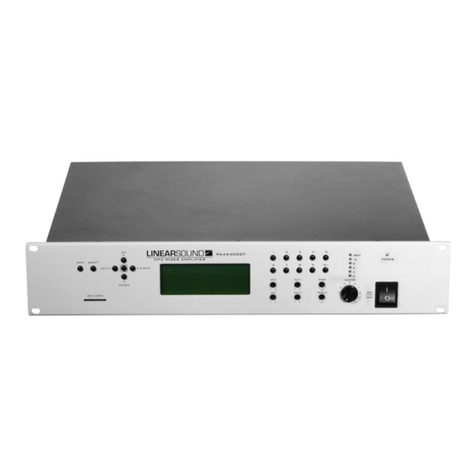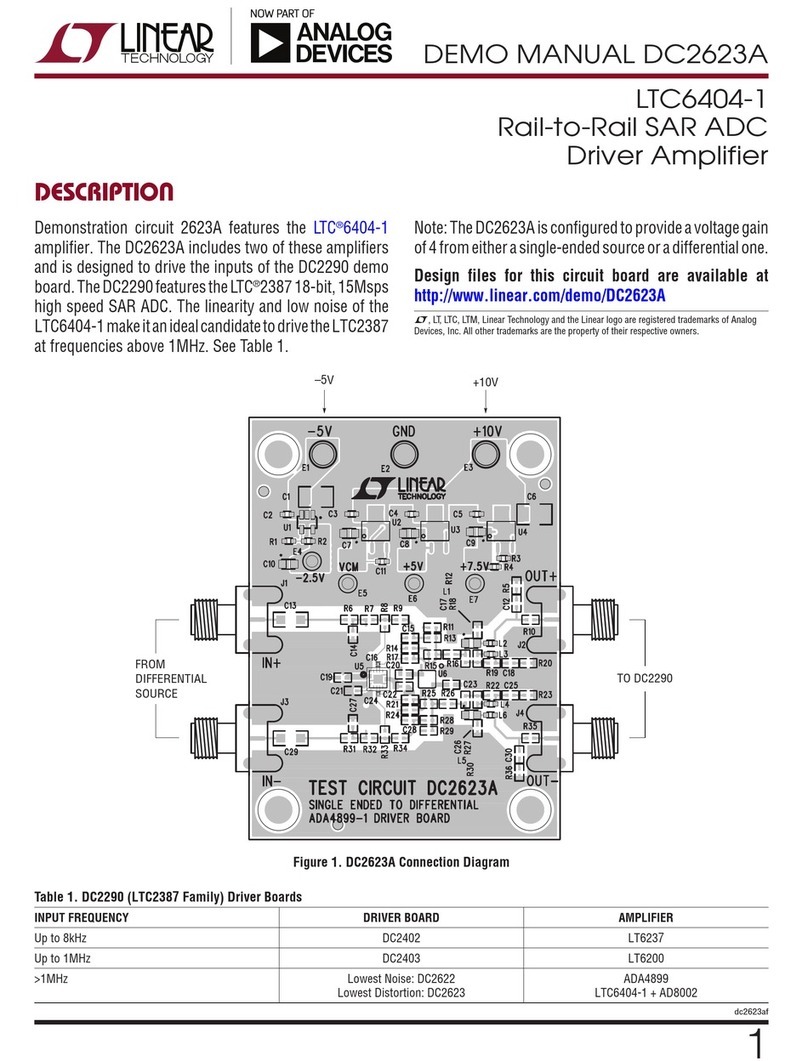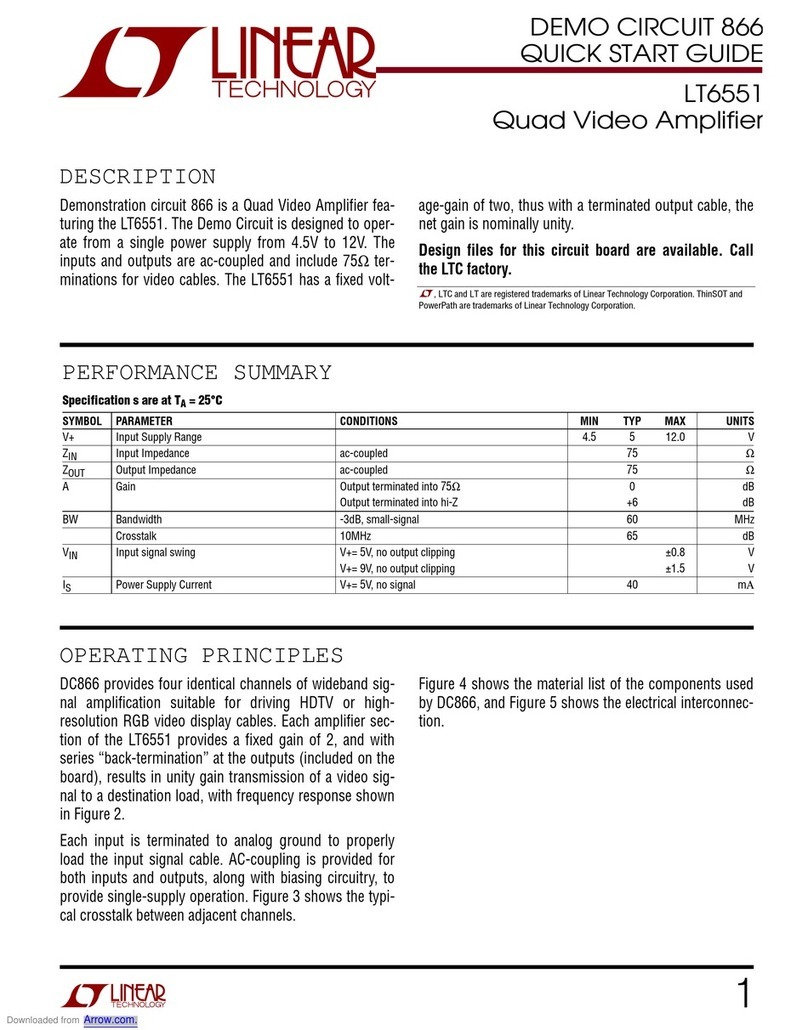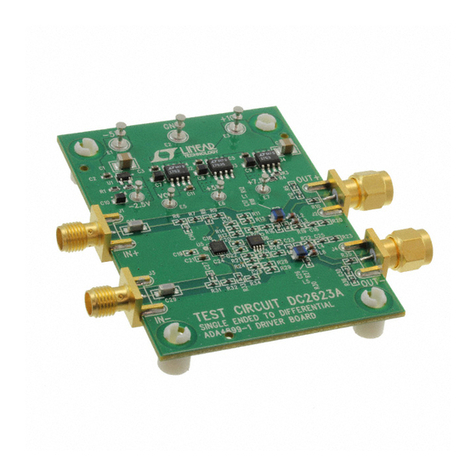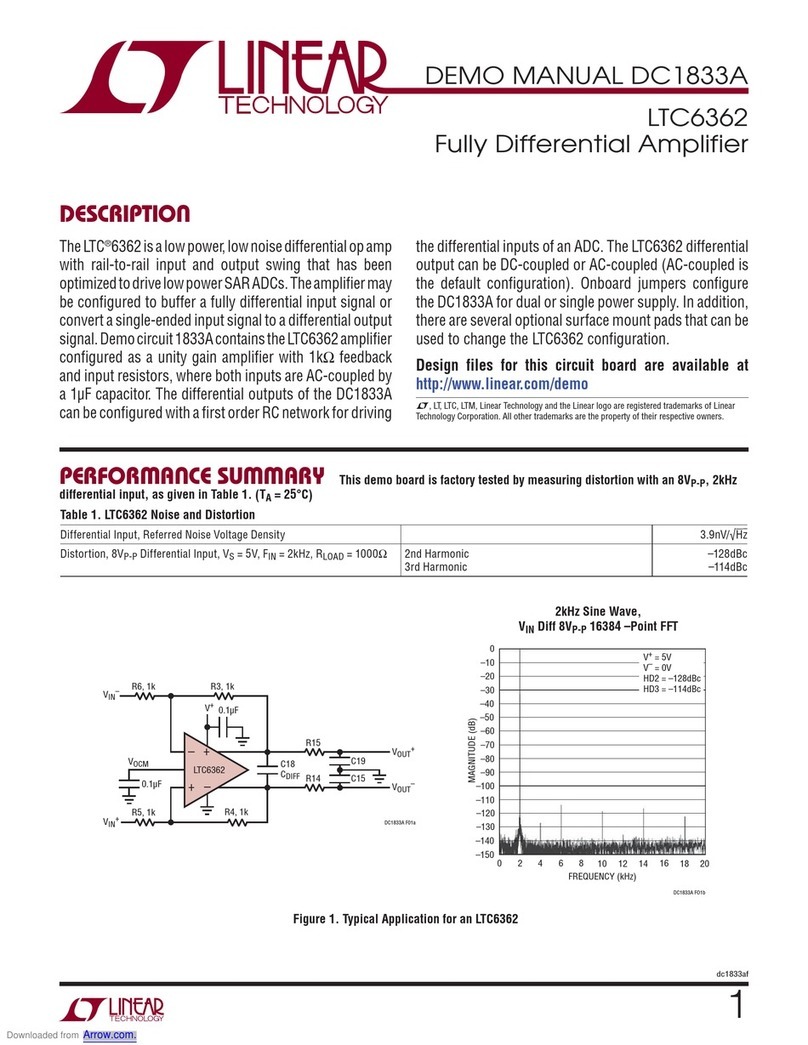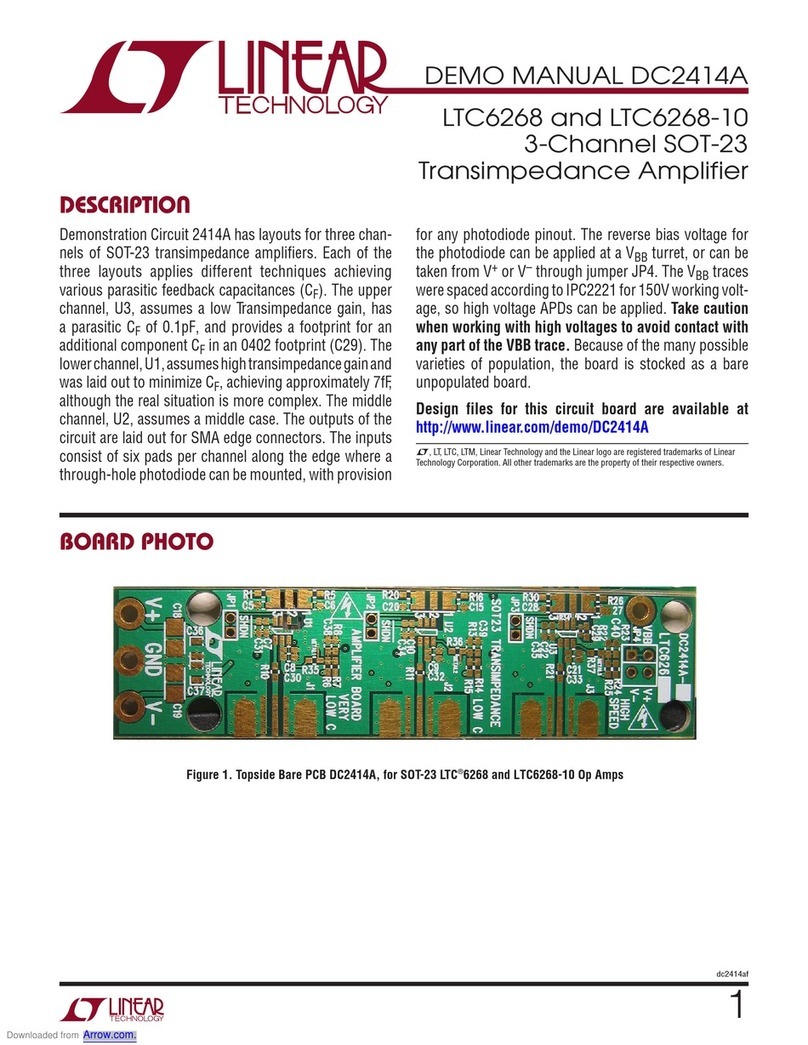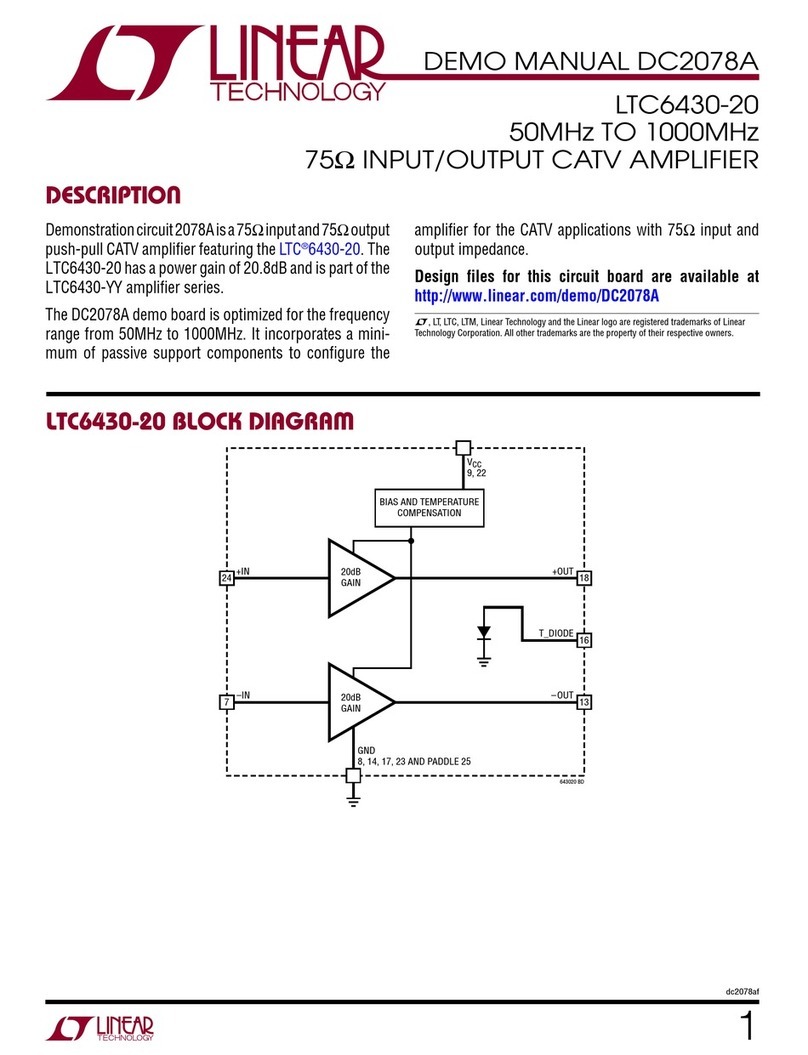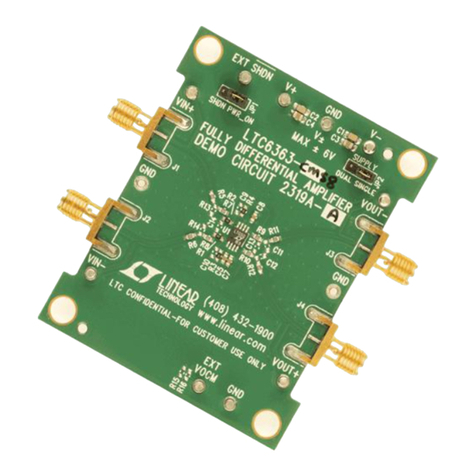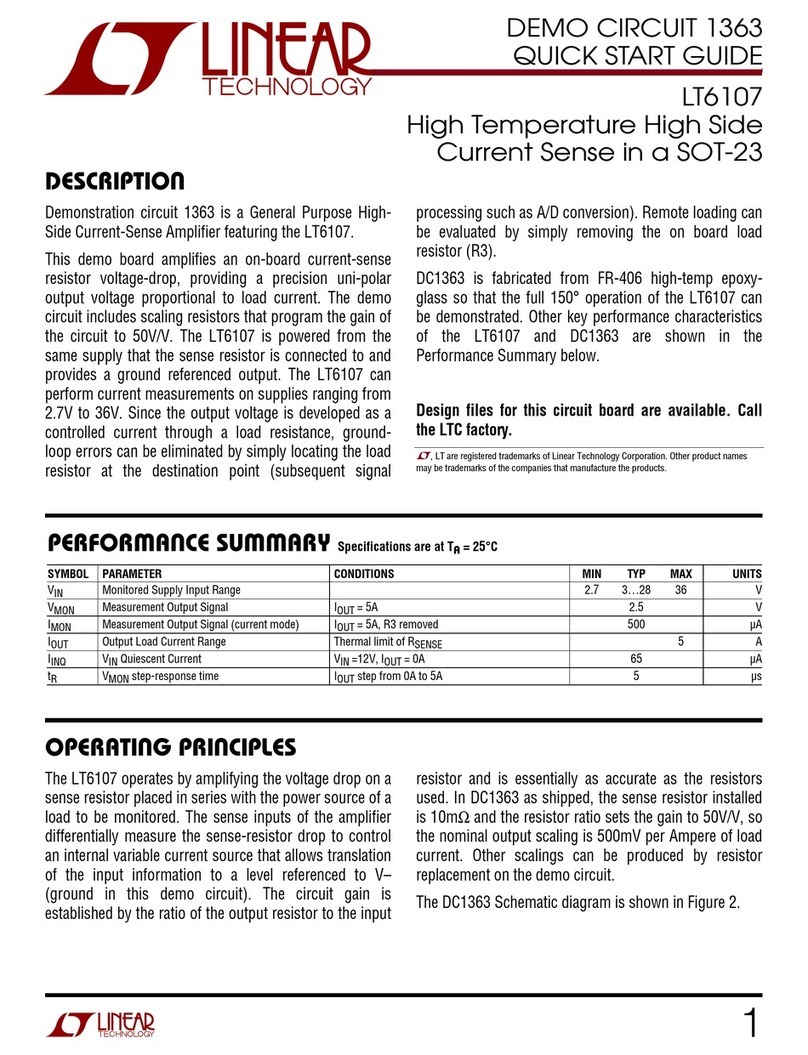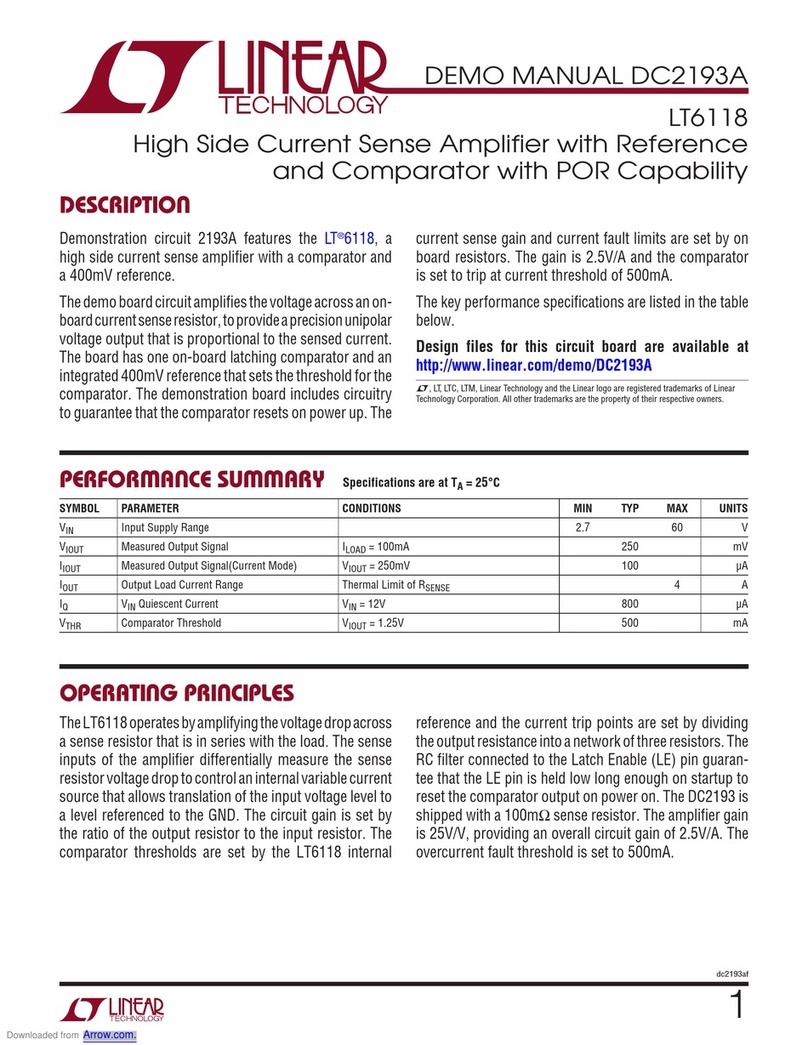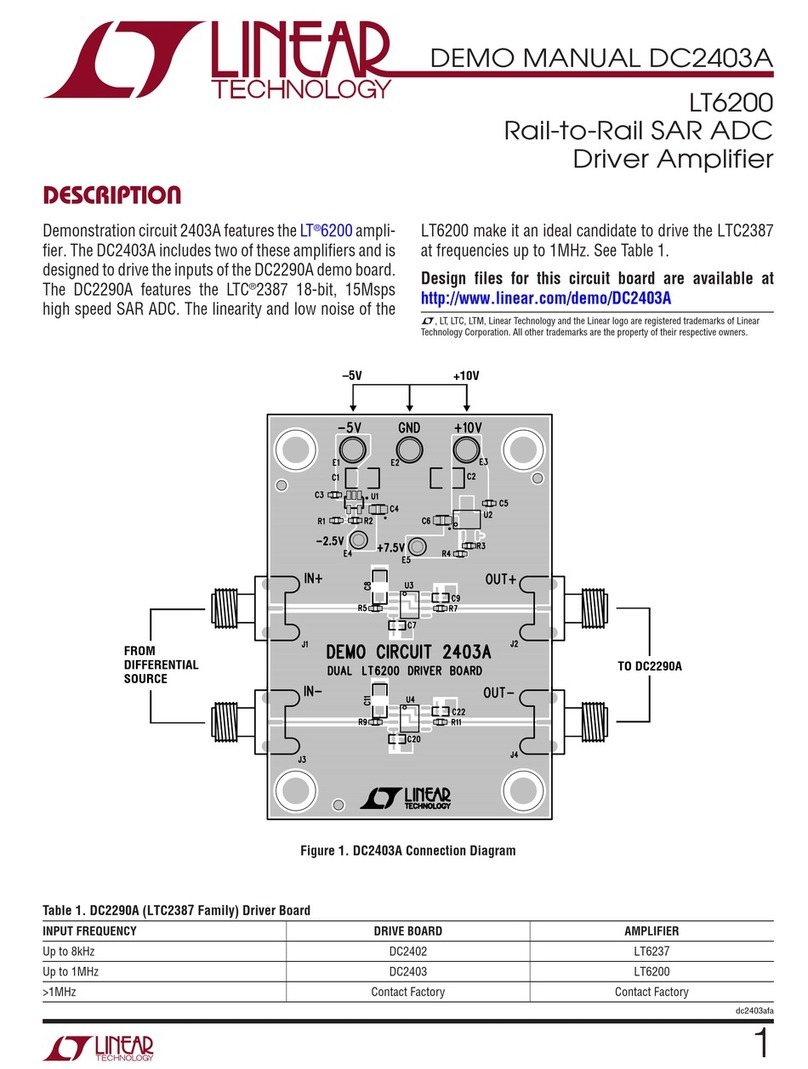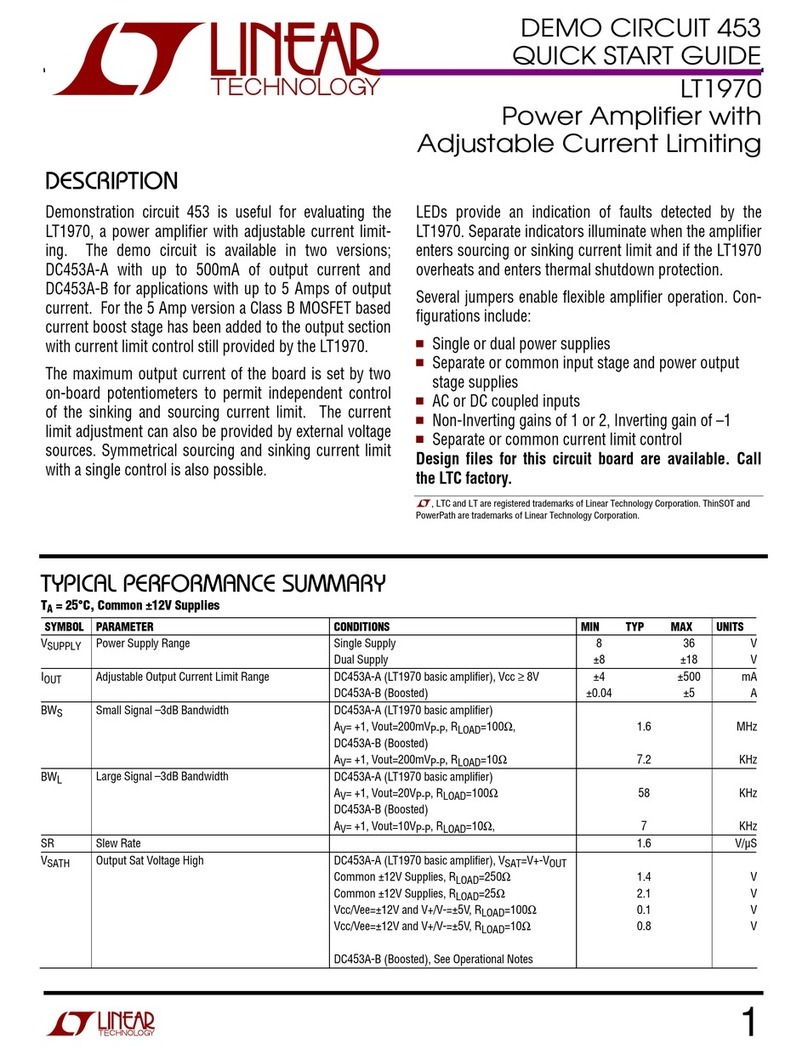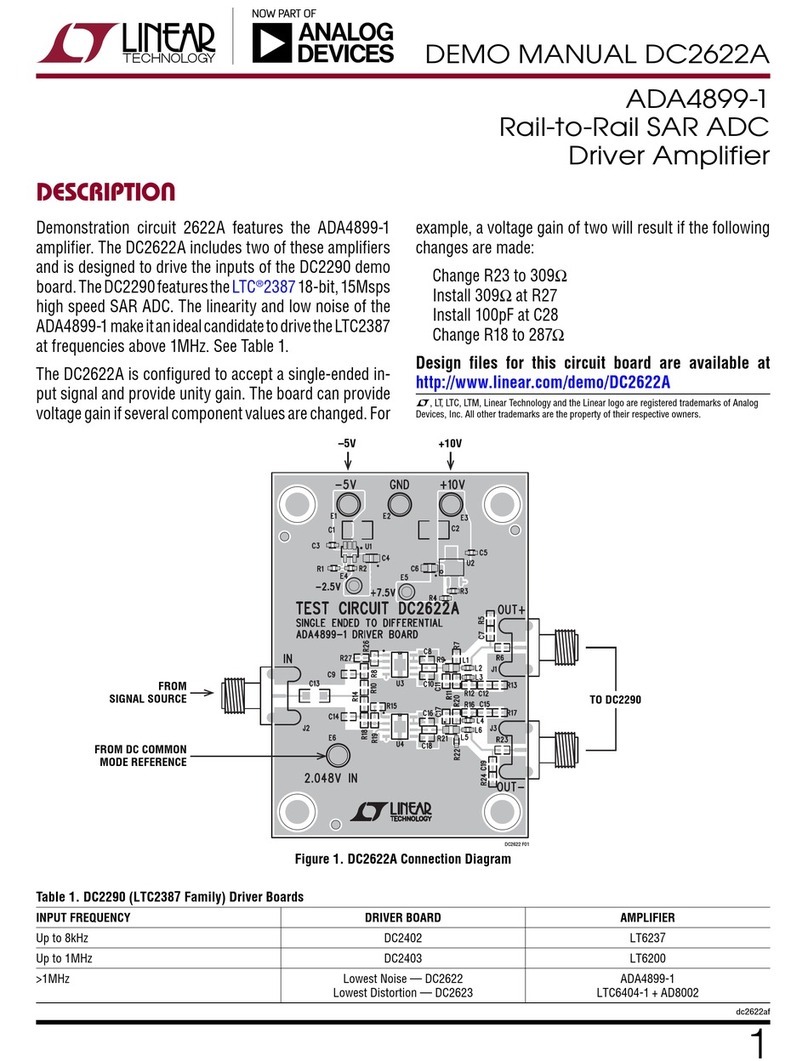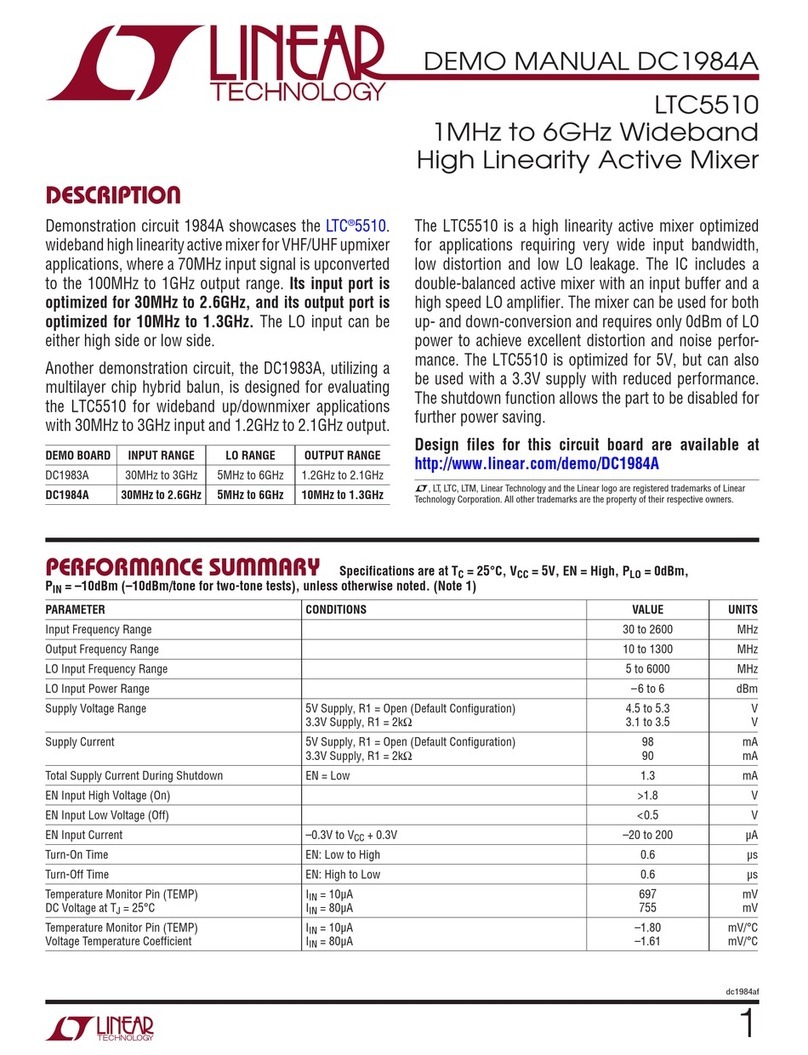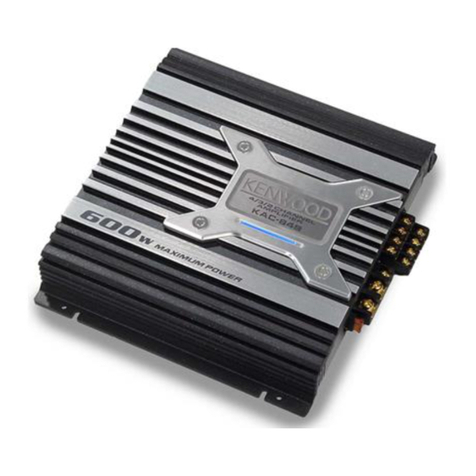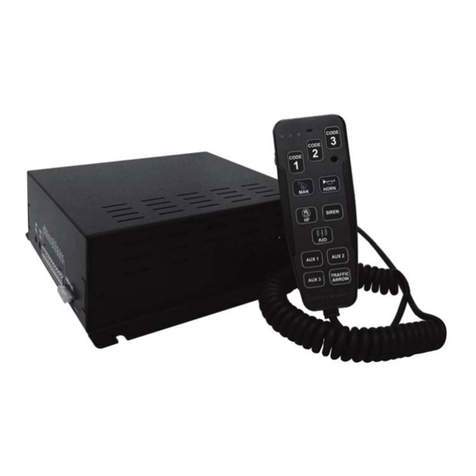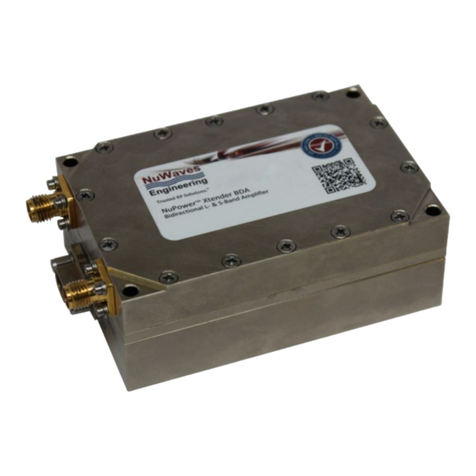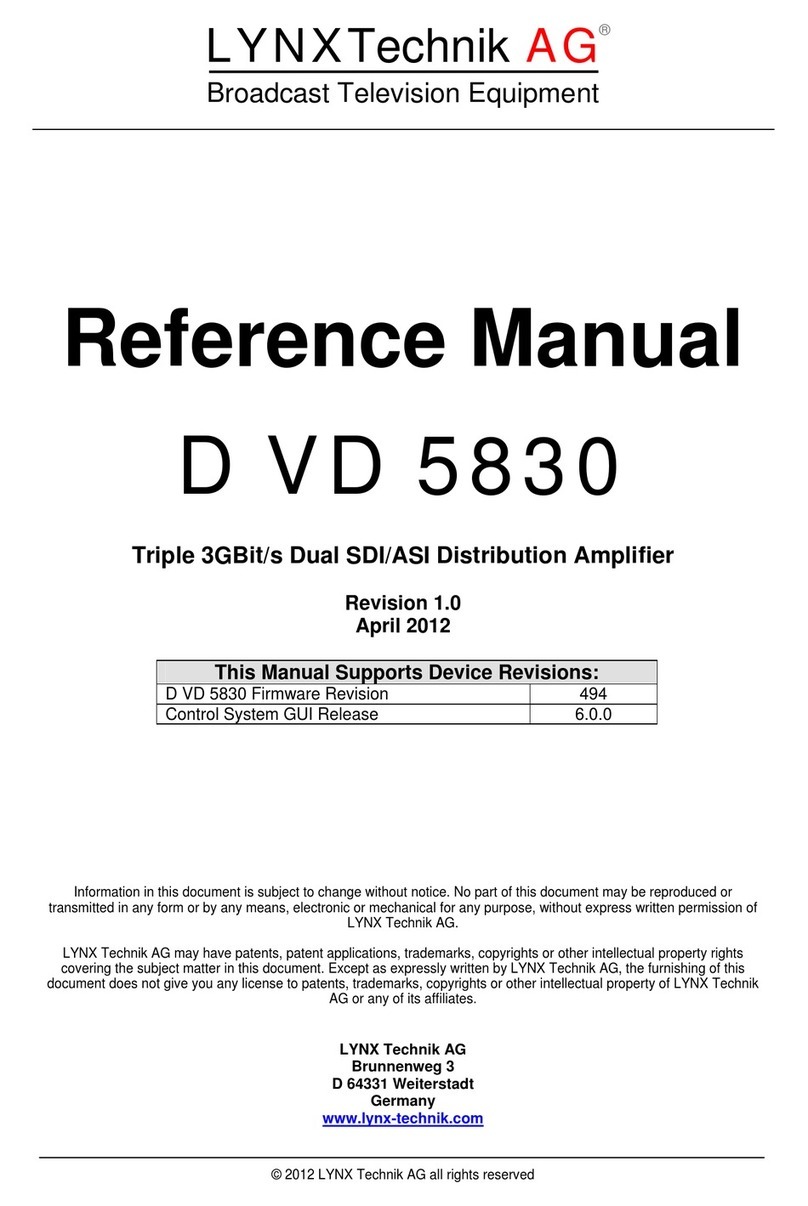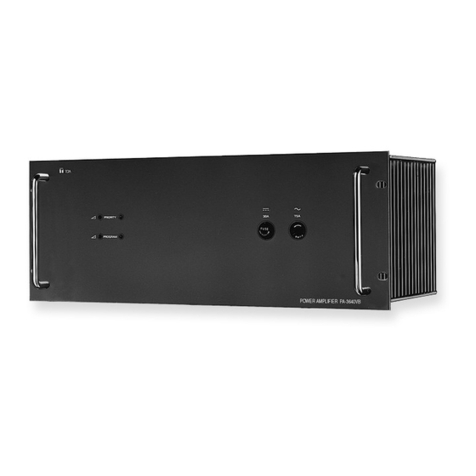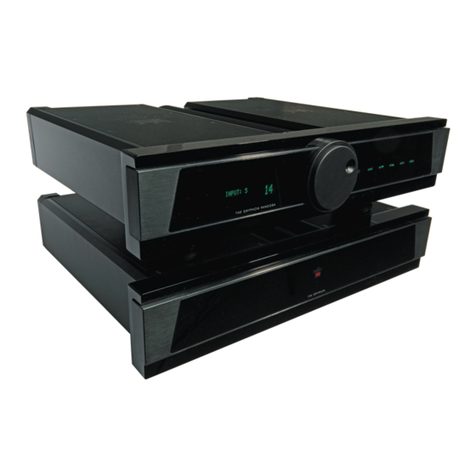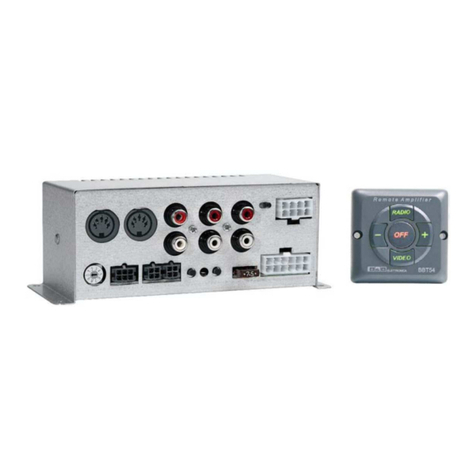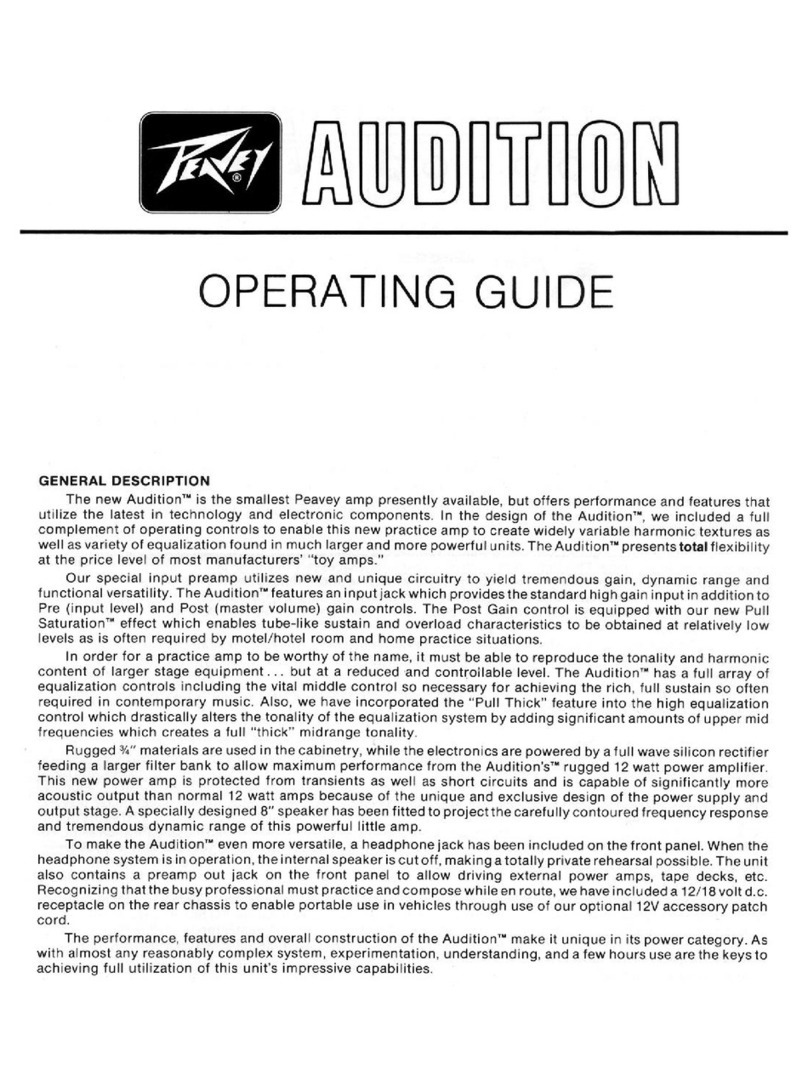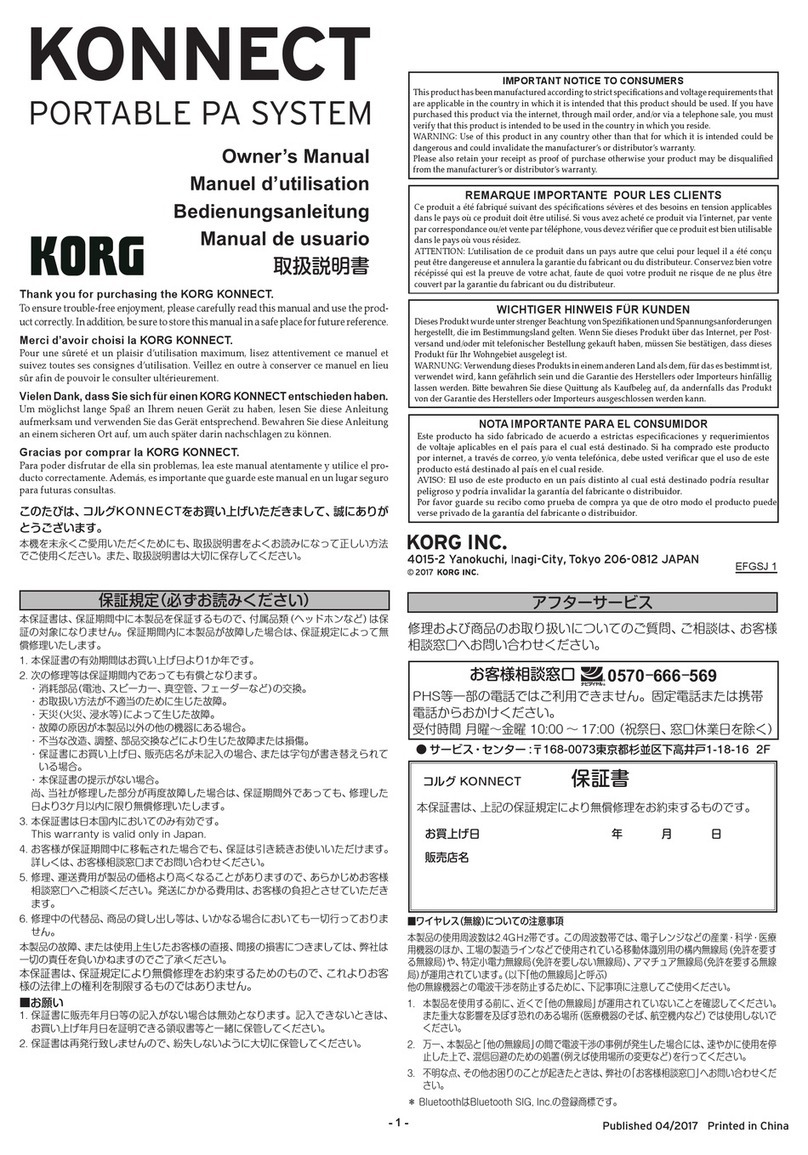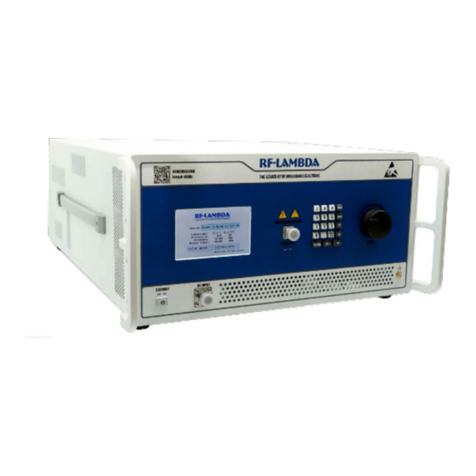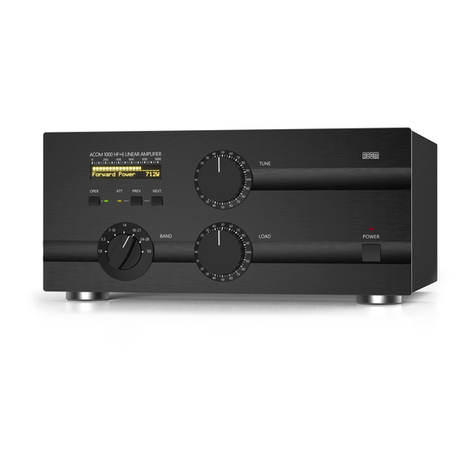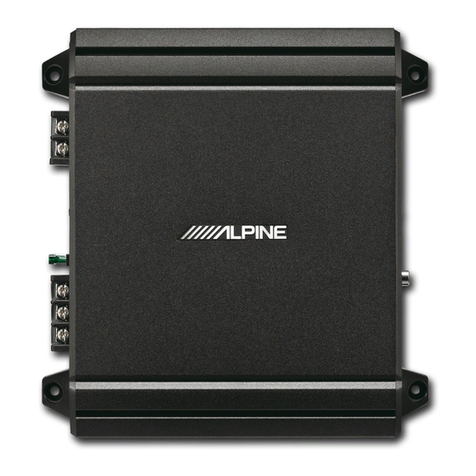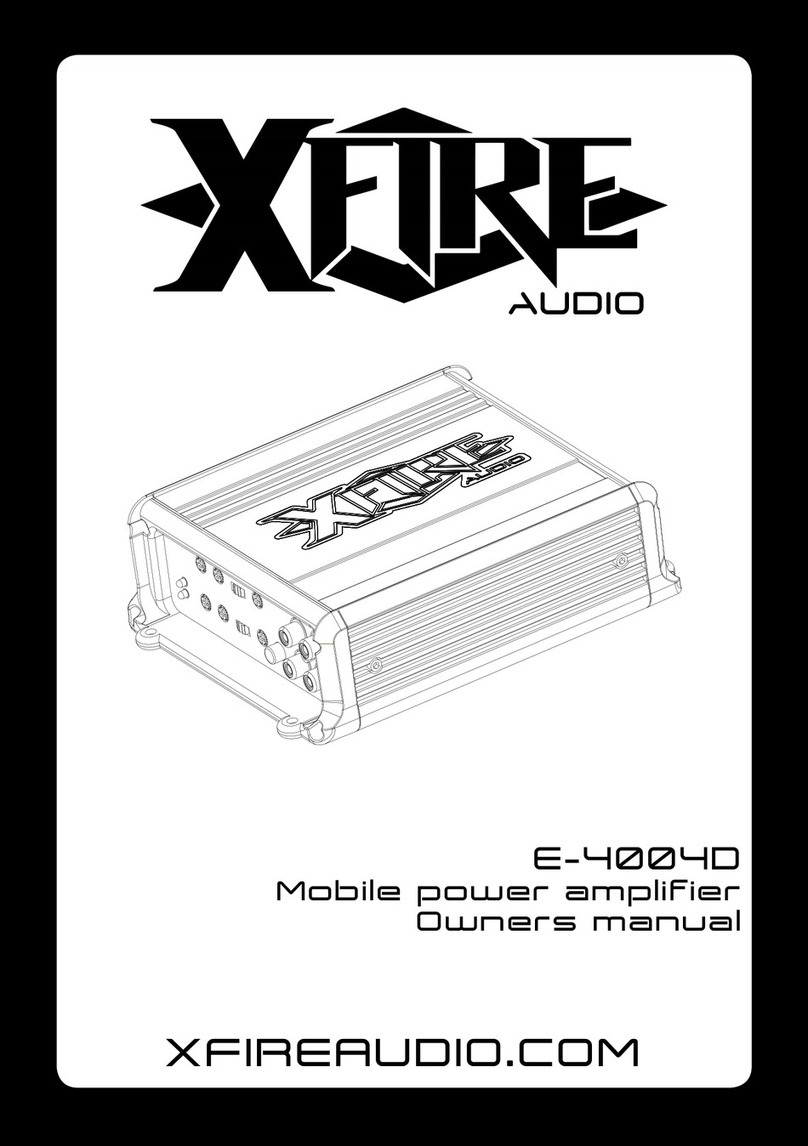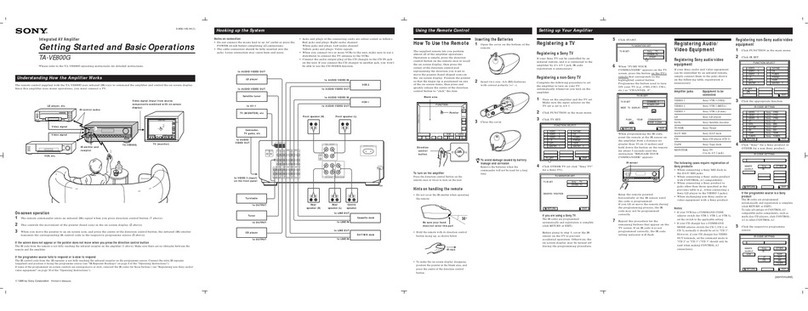
DC1070 QUICK START QUIDE
3
Quick Test Proce ure:
1. Turn on power supp y. The green LED over SW 6 shou d be on.
2. Press the UP push button SW (SW 11) repeated y and the LCD disp ay shou d step thru AV: 1 to Av: 4096 in
powers of two (1, 2, 4, 8, 16, 32, 64, 128, 512, 1024, 2048, and 4096).
Press the DOW N push button SW (SW 12) unti Av: 1. Press the SEND push button SW (SW 13) and then the
STORE push button SW (SW 14). Channe 2 shou d show a 1Vp-p, 50Hz, sinewave (
the STORE push button
SW saves a PGA gain setting so that it is the gain setting when the board is powered-up
). Press the M IN GAIN
push button SW (SW 9) and the LCD disp ay shou d f ash “M IN GAIN SET”.
3. Press the UP push button SW unti AV: 4. Press the M AX GAIN push button SW (SW 10) and the LCD disp ay
shou d f ash “M AX GAIN SET”.
4. Press and ho d the STEP UP push button SW (SW 7) for about three seconds and channe 2 shou d show a
4Vp-p, 50Hz, sinewave (M AX GAIN setting).
5. Press and ho d the STEP DOW N push button SW (SW 8) for about three seconds and channe 2 shou d show a
1Vp-p, 50Hz, sinewave (M IN GAIN setting).
6. Set SW 5 up (HOLD). The green LED over SW 5 shou d be on and the gain setting can not be changed with any
other switch (SW 7-14).
7. Set SW 5 down (THRU).
8. Set SW 6 down (SERIAL). Steps 2-8 can be repeated in Seria M ode.
Note:
the LTC6915 -3dB bandwidth is approximate y 400Hz
.
________________________________________________________________________________________
Using a Bri ge Sensor w ith a DC1070
Figure 3 shows the DC1070 connections using a bridge sensor as an input signa source. The bridge sensor can
be any sensor that is configured as a W heatstone resitive bridge with one two or four sensor e ements. Figure 4
shows a resistive bridge that can be used to simu ate the output of a W heatstone bridge sensor.
Test Proce ure Using the Figure 4 Bri ge
1. On DC1070 set SW 3 to COM and SW 15 to EXT and Connect Figure 4 bridge to DC1070 as per Figure 3.
2. Connect bridge supp y, DC1070 power supp y, vo tage source and 6 1/2 DM M as per Figure 3.
3. Set the bridge supp y and the DC1070 power supp y to 3.0V and the vo tage source connected to EXT
VREF to 1.5V. Note: The externa reference vo tage sets the output DC reference (VREF). The bridge input
is equa to [PGA OUT-VREF]/(PGA GAIN). In a sing e supp y operation, if the bridge input is positive
(IN+>IN-) then VREF can be 0V. If the bridge input is
±Vo ts then VREF shou d be at east equa to the
maximum bridge input times the PGA gain. For examp e if the maximum bridge input is ±10mV and the PGA
gain is set to 128 then VREF shou d
≥
128 X 10mV or 1.28V. W ith a 3V LTC6915 and a VREF equa to 1.5V,
the maximum [PGA OUT-VREF] range is ±1.5V (R oad
≥
10k).
4.
Set the PGA gain to 1 using the UP and DOW N push button SW and adjust the bridge 100 ohm potentiometer
unti [PGA OUT-VREF]=10mV.
5.
M easure the bridge vo tage [VB+OUT - VB-OUT] (this is the vo tage of the bridge supp y). The ratio of [PGA
OUT-VREF]/ [VB+OUT - VB-OUT] is a measure of the bridge unba ance or sensor sensitivity. For examp e, if
the bridge sensor is measuring weight in bs and for each b [PGA OUT-VREF]=10mV then [PGA OUT-VREF]/
[VB+OUT - VB-OUT]=0.003333 and the sensor output is 0.003333/b. The ratiometric bridge measurement
provides for bridge sensor ca ibration in units of a physica variab e (weight, pressure, temperature,… ) and is
insensitive to the abso ute va ue of the bridge vo tage or resistance (if the bridge vo tage and resistance is sta-
b e during a measurement).


